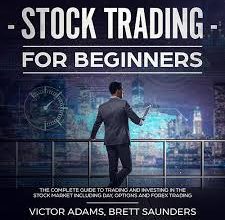Large-cap company equities are expected to grow more quickly than other large-cap stocks. Large-cap stocks are those that make up the top 70% of the U.S. equity market’s capitalization.
We cover the best large-cap stocks to buy right now in this article. Read on to know that fast growth (high growth rates for earnings, sales, book value, and cash flow), as well as high values, are used to describe growth (high price ratios and low dividend yields).
How is Large Cap Defined?
Any publicly traded corporation with a valuation of more than $10 billion has large-cap stocks. Large-cap equities, also known as big-cap stocks, are frequently regarded as the market’s pillars or “blue chips.” Consider well-established titans that hold dominant positions in their respective industries, such as Walt Disney (NYSE: DIS), Coca-Cola (NYSE: KO), and General Motors (NYSE: GM).
The biggest large-cap firms, with a market capitalization of over $200 billion, include JPMorgan Chase (NYSE: JPM) and Amazon (NASDAQ: AMZN), both of which are listed on the New York Stock Exchange. Mega-caps are a term used by certain investors to refer to them, but for the most part, they are just “giant” large-caps.
Top Three Large-Cap Stocks for 2023
Here are some top-notch large-cap stocks to take into account:
#1. Starbucks (NASDAQ: SBUX)
Since its initial public offering (IPO) in 1992, Starbucks has consistently outperformed the overall market, and it appears that it will continue to do so as it recovers from the pandemic. A solid example of a large-cap stock that has growth potential with chances in China, digital, and delivery as well as consistent earnings sources is Starbucks. The corporation has many advantages over its competitors, including a well-known brand, well-liked rewards programs, and technological advancements like Mobile Order & Pay.
Starbucks has experienced difficulties such as a pandemic lockdown in China, a campaign for unionization, and a competitive labor market in the United States. However, the business has survived challenging periods in the past and should do so again.
The business began paying dividends in 2010, and every year since then, it has increased them, positioning it to become a Dividend Aristocrat in the future.
#2. MercadoLibre (NASDAQ:MELI)
A large-cap company that is still expanding swiftly is MercadoLibre, the biggest e-commerce site in Latin America. With its major e-commerce company and shipping network, MercadoEnvios, MercadoLibre shares many parallels with Amazon. However, it also offers unique solutions for Latin America, such as point-of-sale devices for brick-and-mortar retailers.
That’s a part of the business’s quickly expanding MercadoPago payment platform. In Latin America, where it is used to make payments at locations like grocery stores and gas stations, it has developed into something of a transnational bank from its beginnings as a service like PayPal (NASDAQ: PYPL) for MercadoLibre shoppers.
#3. Walmart (NYSE: WMT)
Walmart is both the largest retailer and the highest-grossing firm in the world. It has various competitive advantages, including favorable economies of scale, a reputation for offering affordable pricing, and stores located within 10 miles of 90% of the population of the United States.
How do I Know if my Company is Large Cap?
Stocks signify ownership in businesses of all sizes. If you’re developing a long-term investing strategy, it’s essential to comprehend the relationship between firm size, possible return, and risk. With this information, you’ll be more equipped to create a balanced stock portfolio with a variety of market caps.
Evaluating Stocks
According to their size, firms are typically divided into one of three major categories: large-cap, mid-cap, or small-cap. Market capitalization, often known as a “cap,” refers to a company’s valuation on the open market.
Value Large Cap Stock
Big American corporations that are less expensive or growing more slowly than other large-cap equities make up the majority of investments in high-value portfolios. Large-cap stocks are those that make up the top 70% of the U.S. equity market’s capitalization. Low valuations (low price ratios and high dividend yields) and moderate growth are used to define value (low growth rates for earnings, sales, book value, and cash flow).
US Large Cap Stocks
The phrase “market cap” refers to a company’s overall value after adding up all of its outstanding stock, and no other companies can be added up to a higher total than these ones. The stately ceiling of business, fretted with golden profits, the towering behemoths of economic endeavor that make up the giants of American industry, welcome. These are the top US corporations by market capitalization.
What are the Best Large Cap Stocks?
#1. Apple
. (XNAS: AAPL) is a significant American technology corporation that designs, produces, and sells consumer goods, personal computers, and software. The iPhone smartphone, iPad tablet, and Mac computer hardware are among Apple’s best-known products. Apple recorded total sales of roughly $260 billion in 2019, and its market value is currently over $1.31 trillion.
Apple, like Microsoft, has routinely outperformed consensus EPS forecasts over the past four quarters. Its current EPS is a respectable $12.73, and the business has consistently grown over the years. In the upcoming years, Apple will continue to invest in 5G technology, which is positive for investors.
#2. IBM (XNYS: IBM)
Contrarily, risk-takers would want to think about investing in technology giant IBM. True, there have been some difficult years for IBM stock, disappointing many investors. However, the business is geared toward numerous pertinent sectors, such as cybersecurity and blockchain.
Of course, the pandemic had an impact on IBM, which saw its revenue decline by 4.6% annually to $73.6 billion in 2020. However, IBM could come as a surprise given its attractive businesses.
#3. Caterpillar (XNYS: CAT)
A renowned producer of heavy machinery, power systems, and locomotives is Caterpillar. With a market share of more than 13% in 2021, it will be the largest heavy equipment producer in the world. Construction industries, resource industries, energy and transportation, and Caterpillar Financial Services make up the company’s four reportable segments. Its products are offered through a dealer network that spans the entire world and is maintained by 168 dealers across more than 2,000 branches. In order to boost the chance of Caterpillar product sales, Caterpillar Financial Services offers its customers retail financing for machinery and engines in addition to wholesale financing for dealers.
#4. McDonald’s (XNYS: MCD)
The McDonald’s Corporation is a multinational chain of restaurants. It owns and operates more than 36,000 restaurants in more than 100 different nations. Many of its eateries provide clients with a drive-thru and delivery service.
The market value of the restaurant stock is $170 billion, and its EPS is $6.33. It pays out $5.16 in dividends per share annually. McDonald’s trades more than 1.8 million shares daily and has good liquidity. In approximately 2019, it brought in $21 billion in revenue.
What is Large Cap VS. Small Cap?
Between large-cap and small-cap equities, there are significant disparities in the stock market that go beyond just size. Large-cap companies could run units larger than the total operation of a small-cap corporation because of their far more diversified business operations. This equates to various risks and benefits for investors.
#1. Stage in the Lifetime of a Business
Although not all large-cap corporations have a long history, they do share a maturity in their respective industries. Small-cap companies, in contrast, are early in the economic cycle and have a focused, niche market that is still expanding.
#2.Geography
Small-cap companies haven’t ventured abroad as much because they are more specialized players in their particular industries and are largely focused on American customers. According to data from S&P Dow Jones Indices as of 2019, 79% of sales for companies in the S&P SmallCap 600 Index were domestic, compared to only 62% for the S&P 500. Investors frequently view small-caps as a wager on growth in the American economy as a result.
#3.Growth
Small-cap firms are expanding quickly or intend to do so. While large-cap corporations have previously made all of these advancements, they might be increasing what or where they sell. Small-cap companies could therefore experience greater benefits in their company (and stocks) if their plans succeed.
#4.Risk
Small-cap companies are riskier investments because, in addition to their growth potential, they also carry a greater risk of failure. while large caps have a more diversified business and a larger worldwide presence, which helps to lower their failure risk and investment risks.
#5.Volatility
Small caps typically face greater stock price volatility than large caps due to their relatively higher growth potential and risk. Of course, any given stock could experience some wildly fluctuating price movements, but large caps as a whole are less likely to experience that kind of volatility.
What is Mid Cap and Large Cap?
Large- and mid-cap stocks occasionally trade in the same market, especially for businesses with market capitalizations close to the $10 billion threshold. However, compared to the bulk of mid-caps, the largest large-caps (with a market capitalization that can approach or exceed $1 trillion) offer significantly different advantages as investments.
#1. Stage in the Lifetime of a Business
Although mid-caps don’t have the same level of industry presence as large-caps, that doesn’t necessarily mean that they are newer businesses. While some mid-caps are expanding quickly and will eventually become large-caps, others are declining from their previous status as large-caps. Compared to large-cap companies, mid-cap companies often specialize in fewer goods and services.
#2.Geography
There may be some international business activity by mid-cap corporations, but not to the same extent as large-caps. According to 2019 data published by S&P Dow Jones Indices, 75% of sales are produced in the U.S. by companies in the S&P MidCap 400, a benchmark for the mid-cap market, as opposed to only 62% of sales for members of the S&P 500. That exposes large-cap corporations to fluctuations in the currency market while also providing them with a buffer if the economy is sluggish in any specific location.
#3. Growth
Due to the fact that large-cap companies have already realized many of their major profits, mid-cap companies may still be in the expansion stage. According to data from S&P Dow Jones Indices, the S&P 500 has beaten the S&P MidCap 400 over brief periods of time, like a few years, but not for longer durations, like 20 or 25 years.
#4. Risk
Because these businesses are more established and offer a wider range of goods and services, large-cap stocks are often less risky investments. Mid-cap companies may encounter changes in their businesses that have an impact on their stock values since they lack the same degree of industry domination.
#5. Volatility
Large caps typically fluctuate less than mid-caps due to this lower relative risk. However, individual stocks within either group could at any time face erratic price changes.
Conclusion
Every investor should include large-cap stocks in their portfolio. They shouldn’t, however, be the only equities you invest in, especially for younger investors who typically have a higher risk tolerance. Small-size and mid-cap stocks may offer these individuals a route to financial success.
The high-flying FAANG stocks are all large-cap equities, despite the fact that they are frequently associated with blue-chip investments.
Related Articles
- HOW TO INVEST IN S&P 500: Baby Step The most Popular Options In 2023 (Updated)
- Real Estate Cap Rate: What Is a Good Rental Cap Rate In 2023
- CAP RATE: Definition and Uses In Real Estate Investing
- High Dividend Mutual Funds: Best 2022 Options (Updated)
- Cap Rate in Real Estate: Investors Guide to Know Capitalization Rates






